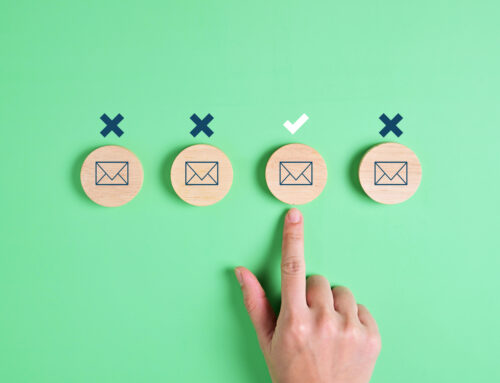
What are the best nonprofit email metrics now, especially since open rates aren’t as useful as they once were?
You’ll find plenty of explanations of what all the nonprofit email measurement numbers technically mean, but what should you really pay attention to? What actually matters?
We suggest three different approaches to tracking your nonprofit’s email metrics, based on what you think is most important now. They build on each other. So work your way down the list as you have capacity.
1. Easy and Basic Nonprofit Email Metrics That Are Still Meaningful
At the most basic level, we encourage you to focus on your click-to-open rate and work to increase that over time. While email opens are still in this equation, the emphasis is on shifting your focus to clicks.
To calculate your click-to-open rate, divide unique clicks by unique opens then multiply by 100.
Now, look for trends or differences between the different kinds of emails you send. For example, what’s the difference between newsletter and fundraising emails or event invitations? Or the topics or style of the subject line?
Once you have your baseline, start to experiment.
As you optimize your emails for clicks, you’ll need to look at the text content and the design. For example, you might try using more teaser content or adding more buttons or white space around text links.
2. Email Metrics that Demonstrate Community Building and Engagement
Click-to-open rates are based on the individual emails you send. But your list health is a huge part of your nonprofit email marketing success or failure.
Nearly all email service providers help you calculate the level of email list engagement. This metric usually looks at the number of people on your mailing list who have clicked a link in the last six months. But those criteria are not uniform across all platforms. So you need to understand how your email service provider defines an “engaged” user. For example, here is how MailChimp calculates engagement.
Next, see if they offer any tools for you to use to adjust those criteria. Those tools are often called lead tracking.
With this basic understanding of how engagement is calculated, you can now set your own benchmarks. What percentage of your list is engaged? Unengaged?
How can you better manage the unengaged, for example, through re-engagement campaigns or archiving unengaged names after a certain period? Cleaning up your email list before year-end is a fabulous idea!
What benchmarks can you set to try to reach over time (e.g., percentage of the list or total number of records at each engagement level when there are several levels)?
3. Nonprofit Email Metrics that Demonstrate the Value of Email Marketing with Your Communications Strategy
So you are optimizing your emails for clicks and watching your nonprofit’s email list engagement. What’s next?
It’s time to think about how well your email strategy contributes to your big marketing goals at your nonprofit like community engagement.
One excellent approach is implementing UTM links, which allow you to track where your website traffic is coming from, including your own emails. Here’s our basic explanation of how they work.
UTM links allow you to look outside your email service provider and get email performance data through your website metrics (like Google Analytics).
The trick to making UTMs work is deciding which parameters to use (start with Source, Medium, and Campaign) and then creating a naming convention — or a consistent menu of options for each parameter. You want to use the same term every time so that Google Analytics properly collates the data.
For example, you don’t want to call your email newsletter “news” one day and then use “newsletter” the next because Google will think those are two different things. Same with campaign names: “year-end” and “Yearend” won’t be combined. Don’t use spaces and stick with lowercase to keep things clean.
This doesn’t have to be all or nothing. Implement UTMs on one set of emails (like a series of emails in a campaign or welcome series) to see how it goes and expand from there.
What Other Email Metrics Should We Track?
Are there more things to track? Always.
Tracking overall list growth and the number and frequency of your email sends are also important to your long-term email strategy.
But you can add those things when you have time. Pick where you are above now and see what you can learn.
What About Nonprofit Email Benchmarks?
We always recommend that you benchmark against yourself. Your particular list and email strategy, including sending frequency, segmentation, and content, are the biggest drivers of your email success. However, if you do want nonprofit benchmarks, you can start with Neon One’s data as well as the M+R benchmarks





